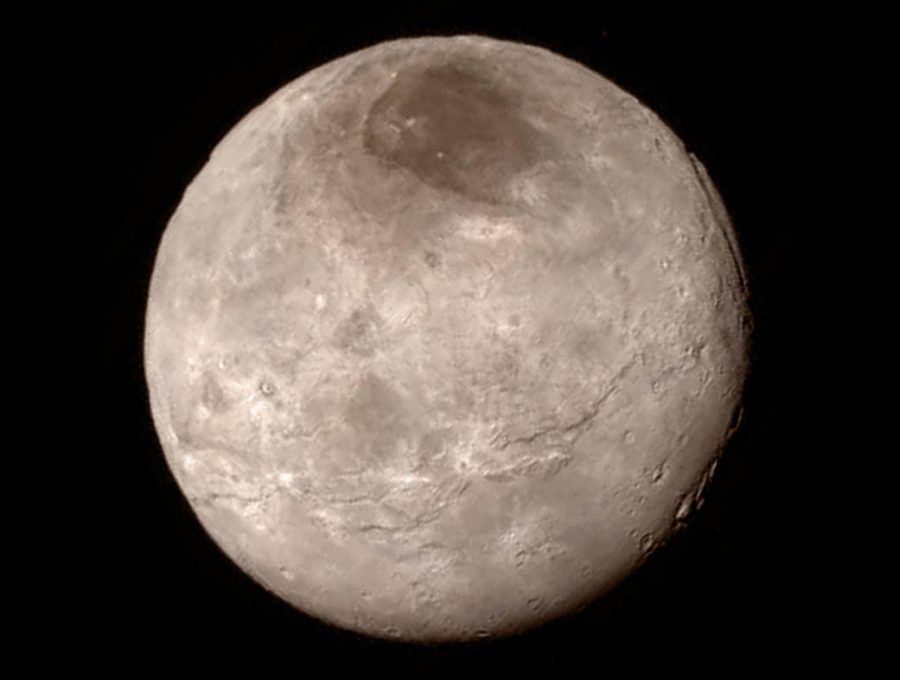Pluto’s largest moon, Charon
This image was taken of Charon from a distance of 289,000 miles. The large moon has very few craters. This means, like Pluto, Charon might be geologically active.In the upper part of the image, a dark feature, nick-named Mordor by the mission team, is seen to have a distinct boundary suggesting it is a thin deposit of dark material. Higher resolution images will be sent back by the spacecraft in the coming days.
July 16, 2015
This image was taken of Charon from a distance of 289,000 miles. The large moon has very few craters. This means, like Pluto, Charon might be geologically active.
In the upper part of the image, a dark feature, nick-named Mordor by the mission team, is seen to have a distinct boundary suggesting it is a thin deposit of dark material. Higher resolution images will be sent back by the spacecraft in the coming days.



